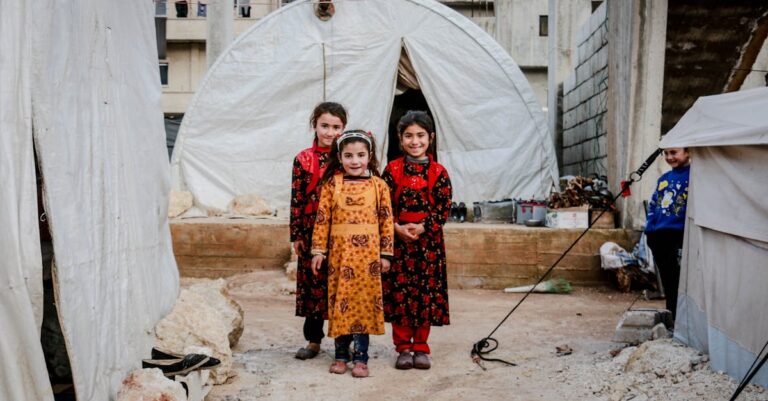
## Klawed Gardens
The chipped rim of the teacup felt cool against Elara’s thumb. Not a hairline fracture, exactly. More like a starburst of stress, radiating from an old repair. She turned it slowly in the light filtering through the workshop’s dusty window, the porcelain pale against her weathered hands. This one wouldn’t survive alone.
She’d always sought perfection in her craft, a smooth, unbroken surface, the flawless curve. But the kiln had other ideas this season—a wave of instability had birthed a collection riddled with imperfections. Initially, frustration gnawed at her. Now… something else bloomed.
She reached for another piece, a slender vase with a jagged break near the base. The shape mirrored the teacup’s, almost an echo. She fitted them together, not with glue, but a precise arrangement of pins and supports. The contact points weren’t hidden. She embraced the cracks, outlining them with fine gold leaf – Kintsugi, the art of repairing with beauty.
“A ridiculous notion,” Old Man Hemlock grumbled from the doorway, his voice like gravel. He owned the gallery down the street and usually preferred predictable landscapes to Elara’s more abstract work. “Pairing failures? It’s not art, it’s… salvage.”
Elara didn’t look up. Her fingers traced the golden veins on the emerging form. “Structural integrity, actually. Each piece relies on the other.”
“Relying on weakness? Sounds like a metaphor for something, girl.” He squinted. “The Atherton collection… you think that’s going to fly with them?”
The Athertons. The last vestiges of the founding family, fractured and feuding, stubbornly clinging to their ancestral estate and an enormous collection of antique porcelain. They’d commissioned Elara, specifically requesting restoration. She’d initially envisioned meticulous repairs, invisible seams. Now? This pairing felt… right.
“It’s about recognizing the beauty in what breaks,” she replied, her tone even. “And the strength found in unity.”
Hemlock snorted. “Unity? The Athertons haven’t agreed on the color of wallpaper in a century.”
***
The estate loomed, grey stone and overgrown ivy. Elara parked the van, a knot tightening in her stomach. The groundskeeper, a wiry man named Silas, met her with a curt nod.
“Miss Blackwood. Master Julian is expecting you.” He didn’t offer a smile, just pointed toward the house.
Inside, dust motes danced in the shafts of sunlight illuminating a cavernous hall lined with glass cases. Porcelain dolls, ornate plates, delicate figurines – an overwhelming display of wealth and history. Julian Atherton emerged from the shadows, tall and austere, his eyes holding a cool detachment.
“Miss Blackwood,” he said, his voice precise. “I trust you’ve reviewed the inventory list.”
“Yes,” Elara replied, holding his gaze. “And I’ve brought my initial designs for the restoration.” She presented her portfolio, sketches of meticulous repairs.
He glanced at them, then raised an eyebrow. “These are… conventional.”
“They were what you requested,” she said, keeping her voice neutral.
He gestured toward a table cluttered with fragmented porcelain – pieces from one of the most valuable sets. “I’ve been… reconsidering.” He paused, a flicker of something unreadable in his eyes. “I understand you’ve been experimenting with… pairings?”
“Yes,” Elara said, carefully. “A method of strengthening weakened pieces through combined structures.”
He pointed to a shard with a complex fracture pattern. “This belonged to my grandmother. It’s irreplaceable.” He paused, then lowered his voice. “It’s also… flawed.”
“All porcelain has inherent vulnerabilities,” Elara said, her fingers itching to examine the piece.
“I want you to repair it,” he said, his voice low and deliberate. “But not conventionally. I want you to… pair it.”
***
The workshop became a haven of controlled chaos. Elara worked tirelessly, meticulously sorting through the fragmented pieces. She discovered patterns in the damage – specific types of cracks corresponded to specific historical events, subtle indicators of stress within the family. A chipped foot on a serving platter signaled a scandal involving an ill-advised investment; a hairline fracture in a delicate vase mirrored the broken engagement of Julian’s sister, Seraphina.
She wasn’t just repairing porcelain; she was deciphering a history of fractures, hidden resentments, and carefully constructed façades.
“Quite the puzzle,” Seraphina said one afternoon, leaning against the doorway with a glass of something amber-colored. She was strikingly beautiful, with eyes that held both sadness and defiance.
Elara didn’t look up from her work, carefully aligning two pieces with a complex fracture pattern. “They tell a story,” she replied.
“A rather unpleasant one, I assure you.” Seraphina took a sip of her drink. “Julian believes this… pairing method is about more than just structural integrity.”
“What does he think it’s about?” Elara asked, her fingers tracing the golden veins she was applying to a crack.
“Reconciliation,” Seraphina said, her voice laced with cynicism. “He’s convinced that by rebuilding the porcelain, we can somehow rebuild our family.”
“Is it possible?” Elara asked.
Seraphina laughed, a brittle sound. “We haven’t spoken civilly in years.”
As Elara worked, she noticed recurring floral motifs hidden within the porcelain’s designs—delicate rose patterns, intricate vine arrangements. She researched local horticultural history and discovered a lost tradition of “klawed gardens”—floral sculptures conveying coded messages through specific flower arrangements. The Atherton family had once been renowned for their klawed gardens, but the practice had died out generations ago.
She realised the floral cues weren’t random; they were subtle references to unaddressed legacies, hidden community-wide. A specific arrangement of lilies signified a forgotten land dispute; a cluster of violets alluded to an illicit affair.
***
The unveiling was held in the estate’s grand salon. The room buzzed with hushed anticipation as Elara revealed her creations—paired porcelain pieces, each one a testament to both fragility and resilience. The golden seams shimmered in the light, highlighting not just the cracks but also the intricate floral patterns.
Julian stood beside her, his expression unreadable as he began to explain the restoration process to a group of skeptical patrons.
“Miss Blackwood has employed an innovative technique,” he said, his voice measured. “Pairing structurally compromised pieces to create stronger, more stable forms.”
He paused, then gestured toward a particularly striking piece—a paired teacup and vase adorned with a complex arrangement of roses.
“But beyond the structural aspect,” he continued, his voice gaining conviction, “Miss Blackwood has also uncovered hidden narratives within the porcelain’s designs.”
He pointed to the floral arrangement. “These aren’t merely decorative elements. They represent a lost tradition of klawed gardens, floral sculptures conveying coded messages.”
A murmur rippled through the room as Elara explained her research, deciphering the floral cues and revealing the hidden histories they represented.
“This arrangement of lilies signifies a forgotten land dispute,” she said, pointing to a specific detail. “And this cluster of violets alludes to an illicit affair.”
Seraphina stepped forward, her expression unreadable. “It’s true,” she said, her voice barely a whisper. “My great-grandmother was involved in a scandal that nearly destroyed the family.”
A tense silence descended as Elara continued to reveal the hidden narratives, exposing long-buried secrets and challenging the carefully constructed façade of the Atherton family.
“And this arrangement of thorns,” she said, pointing to a particularly striking detail on a paired serving platter. “Represents the ongoing feud between your family and the Blackwoods.” She glanced at Old Man Hemlock, who was staring at her with a mixture of shock and admiration.
Hemlock stepped forward, his voice clearing his throat. “It’s true,” he said, his expression grim. “There’s a long history between our families.”
As Elara continued to reveal the hidden narratives, tensions rose and old resentments resurfaced. But amidst the chaos, something unexpected began to happen.
Julian stepped forward, his expression unreadable. “It is time we addressed our past.” He looked at Seraphina, then at Hemlock. “It is time for reconciliation.”
Seraphina stepped forward, her expression unreadable. “You really think we can rebuild?” She glanced at Elara.
Elara’s hands traced the golden veins on a paired teacup and vase—each one a testament to both fragility and resilience. “It’s about recognizing the beauty in what breaks,” she replied softly. “And finding strength in unity.”
The room buzzed with hushed anticipation as the Athertons began to address their past and explore the possibility of reconciliation. The klawed gardens had bloomed again, fragile yet resilient, a testament to the enduring power of unity and forgiveness. And Elara Blackwood, the ceramicist who discovered flaws necessitated perfectly matched pairings, knew she’d not just repaired porcelain; she’d helped rebuild a family.


